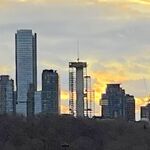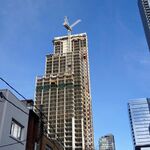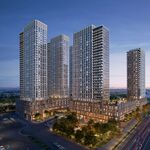I get ya, and you'll get no argument from me that transit can and should be better in Halton Region, which largely rides on the current local governments.
But ya know.........
The main E-W route in Burlington doesn't look so bad: (generally every 12M or better)
The main N-S Route (Brant) is every 15M until 8pm on weekdays, admittedly, 30M weekend service is not so great.
For Oakville's part, I would argue the first route to look at is Lakeshore, this route runs N-S from Oakville GO and then E-W on Lakeshore

www.oakvilletransit.ca
Its every 15M on weekdays (daytime), then 30M on evenings and weekends.
My concern would be clearly both the need to get weekend services up to 15M on those 'flagship' routes. But is that what happens, do we even harmonize 15M service up to the Burlington standard on weekdays or drop it to Oakville's?
I'm pro regional transit, I just want them to approve a service model that shows a clear, funded, committment to service improvement when they approve going regional.
I agree, this would be great to see. I am also glad to see some routes do exist that are popular; I have looked at
some before, and they definitely offer some utility.
I guess the way I see an upload like this happening would be that the munis just want it off their hands- they have less interest in whether it results in better transit. Thus, I don't think a comprehensive service model
would materialize before any agency forms- It just isn't an expectation the stakeholders would press on. With that said, I do think we would see a service plan developed shortly after, and I think that's fine.
As for what that would look like...
I think you mostly nailed the routes that need attention. Frequency is tolerable, but could be better. You are missing Trafalgar for Oakville- perhaps the main N/S artery there, and someday for Milton to the north too (ending at the proposed Trafalgar GO and whatnot...).
My elephant in the room is sorting out Milton- both transit within, and to/from it from the South. The gap between Milton and Burl/Oakville will continue to close, and there hasn't been nearly enough attention on how people are going to travel between. I can't really say what needs to be done within Milton, besides that
some e/w artery is going to emerge as a trunk into the rest of the GTA.
Burlington is a funny case I think about sometimes. Any agency will have to figure out how it interacts with the HSR, and if we should/should not treat Hamilton as a major terminus for the Halton network (rather than, say, Aldershot...) BT runs into Hamilton, yes, but considerations change at a regional scale. I do wonder if amalgamating BT with HSR is the right move instead (given there are two overlapping/shared routes between the respective downtowns), but it isn't necessarily an obvious move given the many non-transit things needed... regardless, York/Fairview & Lakeshore/Beach ought to get some attention.
On some level, I also hope we aren't counting on Metrolinx to provide all the service to Waterdown via the Dundas "BRT", but I won't hold my breath. The entire Waterdown-Aldershot area just feels very dis-integrated and I hope it doesn't remain the status quo. But that's getting into the weeds.
The work for a Halton Agency is cut out for them. That much is clear. The fact that a very large proportion of the region will be contiguously urban should ensure that the agency gets bold from the get-go. For any planners, it will be immediately apparent that transportation demand will rise very, very quickly and for a long time.






